You might think that the best product photography equipment is going to break the bank. And it’s true that you can pay a fortune for gear. But it’s also true that you can start at a reasonable price as well.
The most important piece of your product photography kit is your camera. That’s why the Canon EOS RP is our top recommendation in this review. It’s an entry-level full frame mirrorless camera offering excellent resolution, sophisticated AF, and a compact, lightweight body.
Our Top 3 Choices for The Best Product Photography Equipment
Canon EOS RP
Shop Offers
×
Canon EOS RP Deals
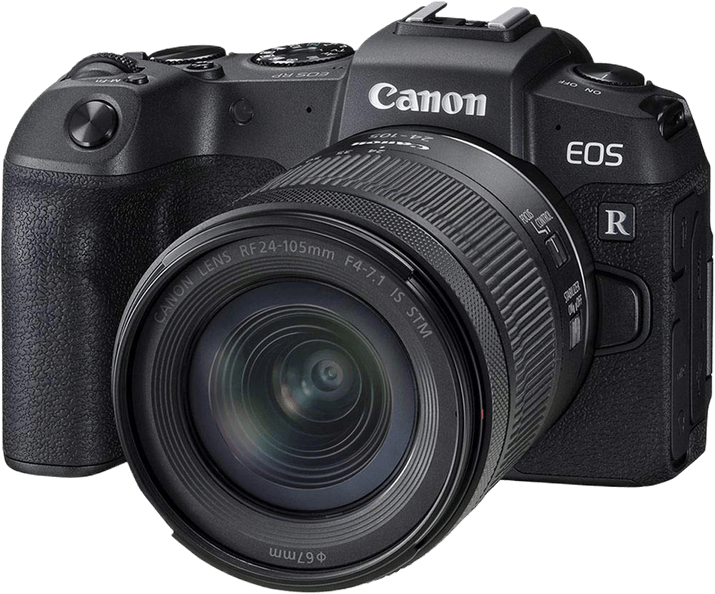
|
(second hand)
Check Price
|
(second hand)
|
Check Price
|
Buy Now!
|
If you buy a product through one of our referral links we will earn a commission (without costing you anything).
Prices last updated on .
As an Amazon Associate, I earn from qualifying purchases. Product prices and availability are accurate as of the date/time indicated and are subject to change. Any price and availability information displayed on Amazon at the time of purchase will apply to the purchase of this product.
Unavailable
Nikon D850
Shop Offers
×
Nikon D850 Deals
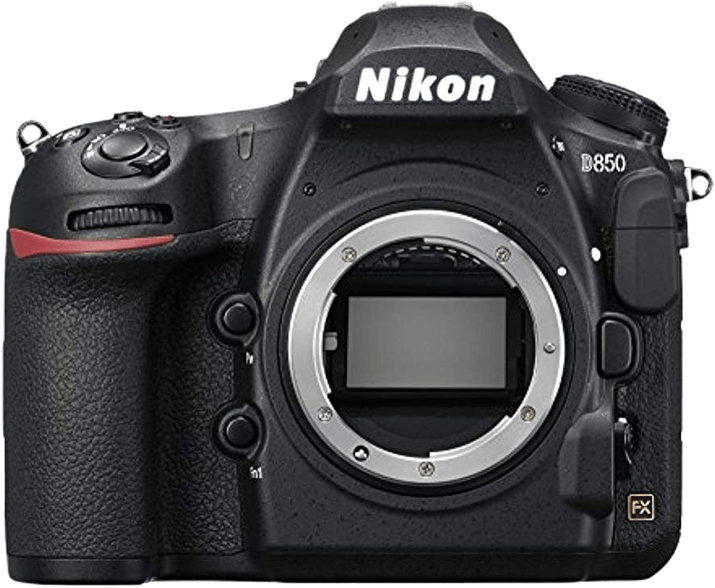
|
(second hand)
Check Price
|
(second hand)
|
Check Price
|
Buy Now!
|
If you buy a product through one of our referral links we will earn a commission (without costing you anything).
Prices last updated on .
As an Amazon Associate, I earn from qualifying purchases. Product prices and availability are accurate as of the date/time indicated and are subject to change. Any price and availability information displayed on Amazon at the time of purchase will apply to the purchase of this product.
Unavailable
Canon EF 24-70mm F/4L IS USM
Canon EF 24-70mm F/4L IS USM
Shop Offers
×
Canon EF 24-70mm F/4L IS USM Deals
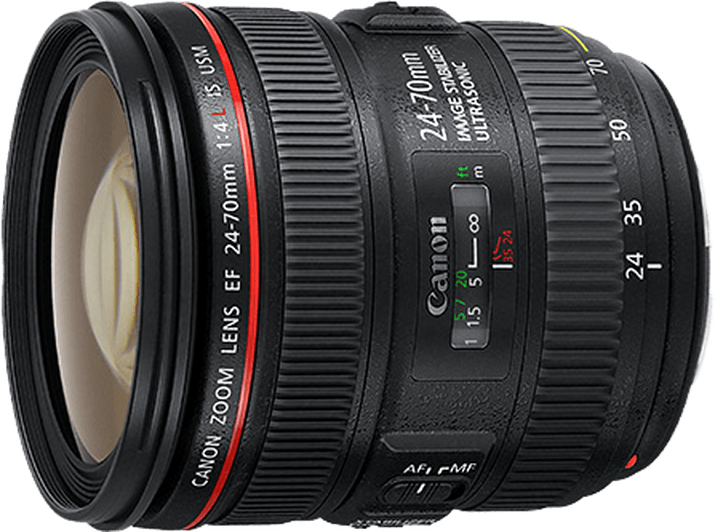
|
(second hand)
Check Price
|
(second hand)
|
Check Price
|
Buy Now!
|
If you buy a product through one of our referral links we will earn a commission (without costing you anything).
Prices last updated on .
As an Amazon Associate, I earn from qualifying purchases. Product prices and availability are accurate as of the date/time indicated and are subject to change. Any price and availability information displayed on Amazon at the time of purchase will apply to the purchase of this product.
Unavailable
What is the Best Product Photography Equipment?
Our review covers everything from cameras to reflectors. We guide you to the best beginner products, but also show you upgrade options. Wherever possible, it’s best to buy the right product the first time. But perhaps you’re not sure that product photography is your thing. In that case, a cheaper starter product might make sense.
Our Top Pick
Canon EOS RP
Canon EOS RP
- 26 MP full frame CMOS sensor
- 4K video recording at 30 fps
- 4779-point AF system for fast focusing
- Works well with EF lenses and adapter
- Touchscreen controls
Shop Offers
×
Canon EOS RP Deals

|
(second hand)
Check Price
|
(second hand)
|
Check Price
|
Buy Now!
|
If you buy a product through one of our referral links we will earn a commission (without costing you anything).
Prices last updated on .
As an Amazon Associate, I earn from qualifying purchases. Product prices and availability are accurate as of the date/time indicated and are subject to change. Any price and availability information displayed on Amazon at the time of purchase will apply to the purchase of this product.
Unavailable
Best Entry-Level Nikon Full Frame Camera
Nikon D850
Nikon D850
- 45.7 MP Sensor
- 4K video
- Fast and accurate 153-point AF system
- Tilting touchscreen LCD
- Built-in Wi-Fi and Bluetooth
Shop Offers
×
Nikon D850 Deals

|
(second hand)
Check Price
|
(second hand)
|
Check Price
|
Buy Now!
|
If you buy a product through one of our referral links we will earn a commission (without costing you anything).
Prices last updated on .
As an Amazon Associate, I earn from qualifying purchases. Product prices and availability are accurate as of the date/time indicated and are subject to change. Any price and availability information displayed on Amazon at the time of purchase will apply to the purchase of this product.
Unavailable
Best Canon Lens
Canon EF 24-70mm F/4L IS USM
Canon EF 24-70mm F/4L IS USM
- Constant f/4 maximum aperture
- Useful zoom range
- Weather-sealed construction
- Very quiet autofocus
- Sharp from edge to edge
Shop Offers
×
Canon EF 24-70mm F/4L IS USM Deals

|
(second hand)
Check Price
|
(second hand)
|
Check Price
|
Buy Now!
|
If you buy a product through one of our referral links we will earn a commission (without costing you anything).
Prices last updated on .
As an Amazon Associate, I earn from qualifying purchases. Product prices and availability are accurate as of the date/time indicated and are subject to change. Any price and availability information displayed on Amazon at the time of purchase will apply to the purchase of this product.
Unavailable
Best Nikon Lens
Nikon AF-S NIKKOR 24-85mm F/3.5-4.5G ED VR
Nikon AF-S NIKKOR 24-85mm F/3.5-4.5G ED VR
- Versatile zoom range
- Fast and silent autofocus
- High-quality ED glass elements
- VR image stabilization
- Lightweight and durable
Shop Offers
×
Nikon AF-S NIKKOR 24-85mm F/3.5-4.5G ED VR Deals
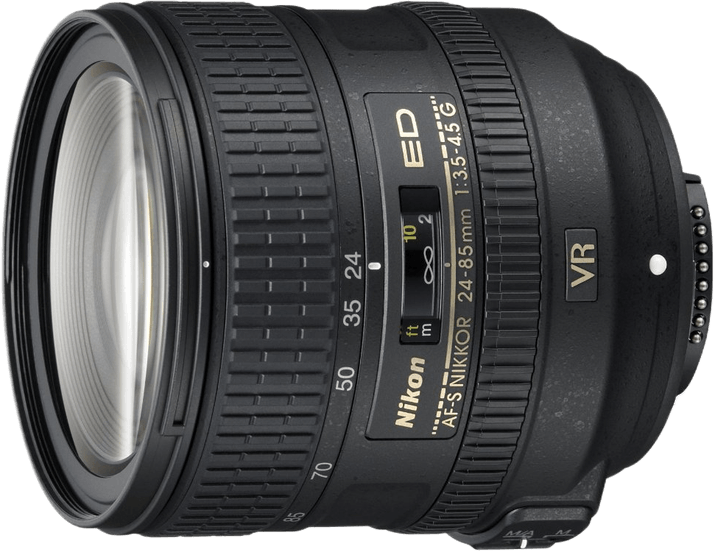
|
(second hand)
Check Price
|
(second hand)
|
Check Price
|
Buy Now!
|
If you buy a product through one of our referral links we will earn a commission (without costing you anything).
Prices last updated on .
As an Amazon Associate, I earn from qualifying purchases. Product prices and availability are accurate as of the date/time indicated and are subject to change. Any price and availability information displayed on Amazon at the time of purchase will apply to the purchase of this product.
Unavailable
Best Value Tripod
Vanguard Alta Pro 263AB 100 Tripod
Vanguard Alta Pro 263AB 100 Tripod
- Lightweight aluminum construction
- Quick-release camera mount
- Multi-angle leg locks
- Adjustable center column
- Maximum height of 63.4”
Shop Offers
×
Vanguard Alta Pro 263AB 100 Tripod Deals
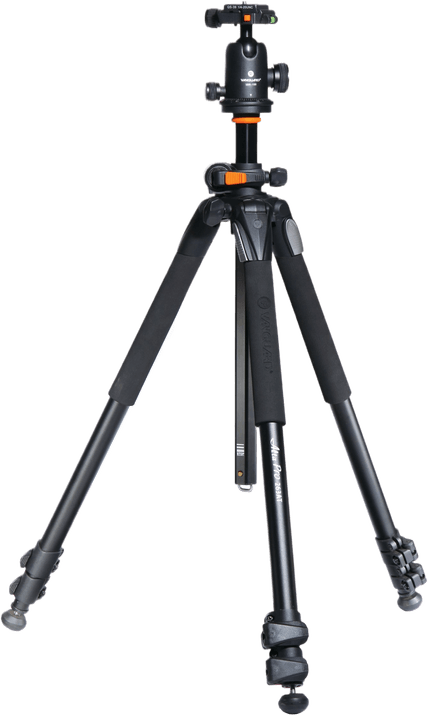
|
(second hand)
Check Price
|
(second hand)
|
Check Price
|
Buy Now!
|
If you buy a product through one of our referral links we will earn a commission (without costing you anything).
Prices last updated on .
As an Amazon Associate, I earn from qualifying purchases. Product prices and availability are accurate as of the date/time indicated and are subject to change. Any price and availability information displayed on Amazon at the time of purchase will apply to the purchase of this product.
Unavailable
Best Premium Tripod
Manfrotto 055 Aluminum 3-Section Tripod Kit
Manfrotto 055 Aluminum 3-Section Tripod Kit
- Lightweight aluminum construction
- Versatile 3-section design
- Quick-release leg locks
- Built-in bubble level
- Supports up to 17.6lbs
Shop Offers
×
Manfrotto 055 Aluminum 3-Section Tripod Kit Deals
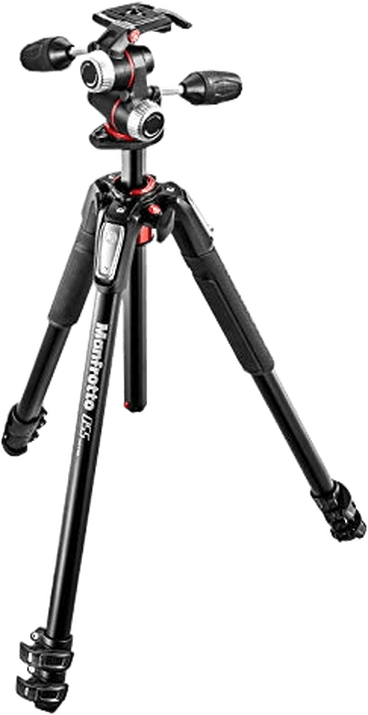
|
(second hand)
Check Price
|
(second hand)
|
Check Price
|
Buy Now!
|
If you buy a product through one of our referral links we will earn a commission (without costing you anything).
Prices last updated on .
As an Amazon Associate, I earn from qualifying purchases. Product prices and availability are accurate as of the date/time indicated and are subject to change. Any price and availability information displayed on Amazon at the time of purchase will apply to the purchase of this product.
Unavailable
Best Single Flash
Complete Flash Kit for Canon Nikon Sony Pentax DSLR Camera
Complete Flash Kit for Canon Nikon Sony Pentax DSLR Camera
- Includes essential accessories for DSLR photography
- Compatible with Canon, Nikon, Sony, and Pentax cameras
- Remote trigger included
- Stand for off-camera mounting
- Includes mini softbox
Shop Offers
×
Complete Flash Kit for Canon Nikon Sony Pentax DSLR Camera Deals

|
(second hand)
Check Price
|
(second hand)
|
Check Price
|
Buy Now!
|
If you buy a product through one of our referral links we will earn a commission (without costing you anything).
Prices last updated on .
As an Amazon Associate, I earn from qualifying purchases. Product prices and availability are accurate as of the date/time indicated and are subject to change. Any price and availability information displayed on Amazon at the time of purchase will apply to the purchase of this product.
Unavailable
best Multi-Flash
Godox 2X TT600 HSS 2.4G Wireless Master/Slaver Flash Speedlite & Receiver Godox X2T-C
Godox 2X TT600 HSS 2.4G Wireless Master/Slaver Flash Speedlite & Receiver Godox X2T-C
- High-performance flash with GN58
- Built-in wireless receiver and LCD display
- Supports multiple flash modes and functions
- Includes flash, flash stand, and remote trigger
- Fast recycle time and long service life
Shop Offers
×
Godox 2X TT600 HSS 2.4G Wireless Master/Slaver Flash Speedlite & Receiver Godox X2T-C Deals
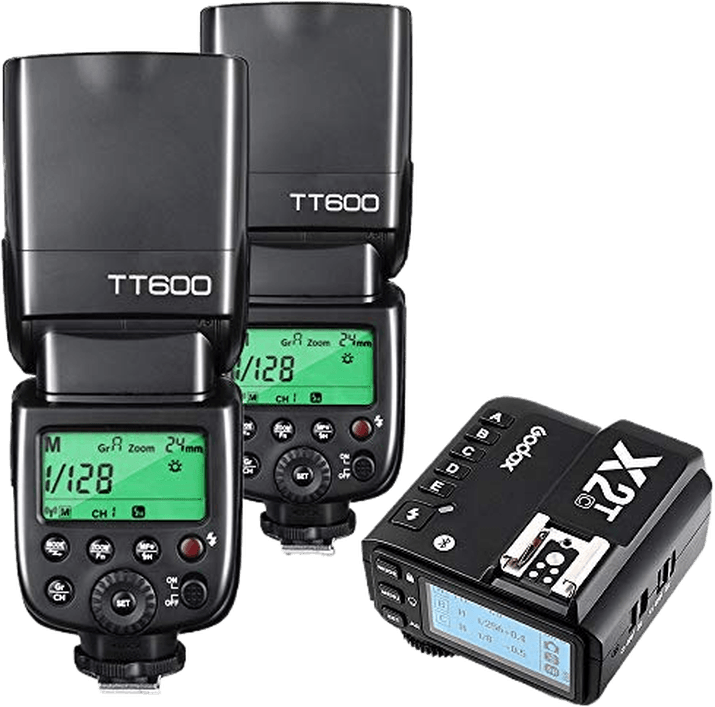
|
(second hand)
Check Price
|
(second hand)
|
Check Price
|
Buy Now!
|
If you buy a product through one of our referral links we will earn a commission (without costing you anything).
Prices last updated on .
As an Amazon Associate, I earn from qualifying purchases. Product prices and availability are accurate as of the date/time indicated and are subject to change. Any price and availability information displayed on Amazon at the time of purchase will apply to the purchase of this product.
Unavailable
Best Light Stand
Neewer Tripod Stand: 17.6lb/8kg Capacity
Neewer Tripod Stand: 17.6lb/8kg Capacity
- Durable aluminum alloy construction
- Lightweight and compact for easy transport
- Non-slip rubber feet for stability
- 3-way pan head with tilt motion
- 17.6 lb/8 kg max load capacity
Shop Offers
×
Neewer Tripod Stand: 17.6lb/8kg Capacity Deals
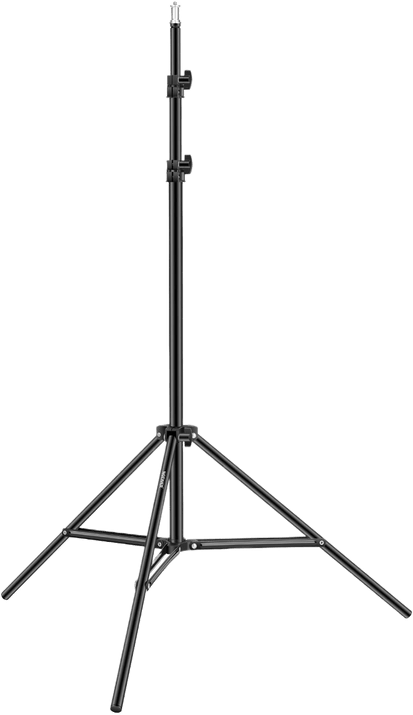
|
(second hand)
Check Price
|
(second hand)
|
Check Price
|
Buy Now!
|
If you buy a product through one of our referral links we will earn a commission (without costing you anything).
Prices last updated on .
As an Amazon Associate, I earn from qualifying purchases. Product prices and availability are accurate as of the date/time indicated and are subject to change. Any price and availability information displayed on Amazon at the time of purchase will apply to the purchase of this product.
Unavailable
Best Flash Adapter
Godox S Type Bracket: Speedlite Flash Mount
Godox S Type Bracket: Speedlite Flash Mount
- Versatile design to fit most flashes
- Durable metal construction
- Quick and easy installation
- Adjustable angle for precise lighting
- Patented design
Shop Offers
×
Godox S Type Bracket: Speedlite Flash Mount Deals
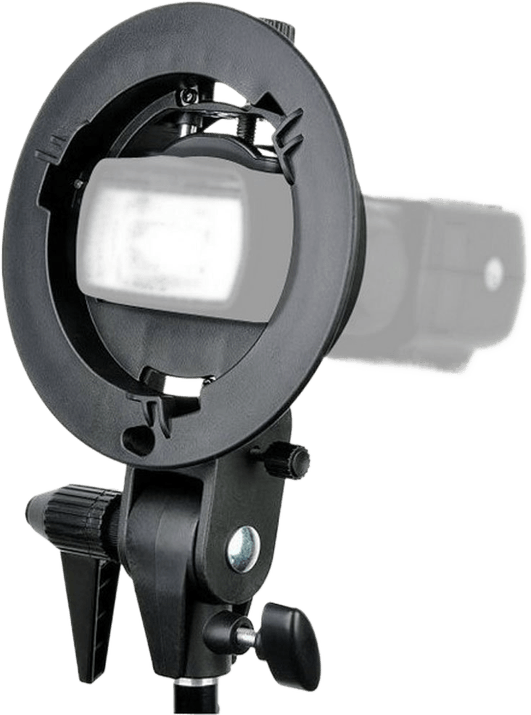
|
(second hand)
Check Price
|
(second hand)
|
Check Price
|
Buy Now!
|
If you buy a product through one of our referral links we will earn a commission (without costing you anything).
Prices last updated on .
As an Amazon Associate, I earn from qualifying purchases. Product prices and availability are accurate as of the date/time indicated and are subject to change. Any price and availability information displayed on Amazon at the time of purchase will apply to the purchase of this product.
Unavailable
Best Softbox
Godox Softbox Lighting Kit
Godox Softbox Lighting Kit
- Large enough for bigger projects
- Grid to prevent light spillage
- Works with Bowens mounts
- Internal and external diffusers
- Also works for studio portraits
Shop Offers
×
Godox Softbox Lighting Kit Deals

|
(second hand)
Check Price
|
(second hand)
|
Check Price
|
Buy Now!
|
If you buy a product through one of our referral links we will earn a commission (without costing you anything).
Prices last updated on .
As an Amazon Associate, I earn from qualifying purchases. Product prices and availability are accurate as of the date/time indicated and are subject to change. Any price and availability information displayed on Amazon at the time of purchase will apply to the purchase of this product.
Unavailable
Best Budget Reflector
3-in-1 Photography Reflector for Food & Product Shots
3-in-1 Photography Reflector for Food & Product Shots
- Versatile 3-in-1 reflector for photography
- Compact, lightweight, and easy to carry
- Durable high quality construction
- Affordable cost-effective solution
- Can be used for indoor and outdoor shoots
Shop Offers
×
3-in-1 Photography Reflector for Food & Product Shots Deals

|
(second hand)
Check Price
|
(second hand)
|
Check Price
|
Buy Now!
|
If you buy a product through one of our referral links we will earn a commission (without costing you anything).
Prices last updated on .
As an Amazon Associate, I earn from qualifying purchases. Product prices and availability are accurate as of the date/time indicated and are subject to change. Any price and availability information displayed on Amazon at the time of purchase will apply to the purchase of this product.
Unavailable
Best Multi-Reflector
Neewer 24×36″ 5-in-1 Photography Lighting Reflector
Neewer 24×36″ 5-in-1 Photography Lighting Reflector
- 5-in-1 reflector offers versatility
- 24 x 36-inch size fits most standard reflectors
- Lightweight and portable
- Durable construction
- Affordable price
Shop Offers
×
Neewer 24×36″ 5-in-1 Photography Lighting Reflector Deals
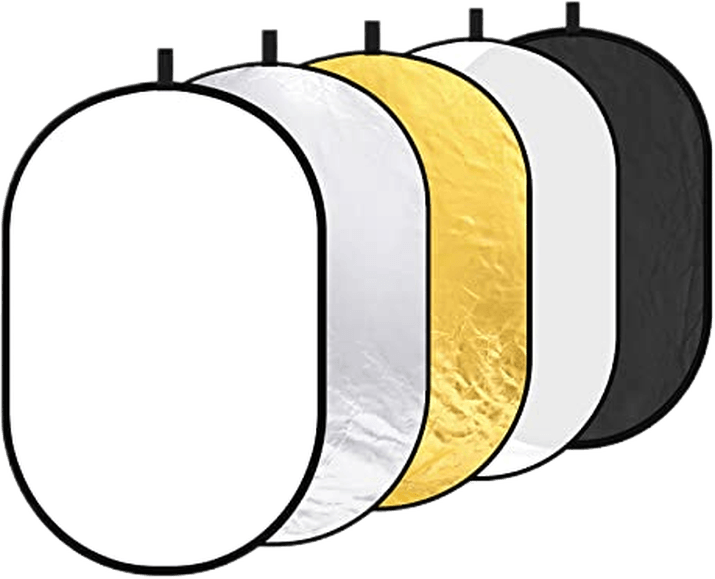
|
(second hand)
Check Price
|
(second hand)
|
Check Price
|
Buy Now!
|
If you buy a product through one of our referral links we will earn a commission (without costing you anything).
Prices last updated on .
As an Amazon Associate, I earn from qualifying purchases. Product prices and availability are accurate as of the date/time indicated and are subject to change. Any price and availability information displayed on Amazon at the time of purchase will apply to the purchase of this product.
Unavailable
Best Cleaning Kit
Giottos Lens Cleaning Kit
Giottos Lens Cleaning Kit
- Professional quality cleaning kit
- Removes dust, dirt, and fingerprints
- Includes air blower, lens cloth, and brush
- Safe for all lenses and displays
- Compact and easy to use
Shop Offers
×
Giottos Lens Cleaning Kit Deals

|
(second hand)
Check Price
|
(second hand)
|
Check Price
|
Buy Now!
|
If you buy a product through one of our referral links we will earn a commission (without costing you anything).
Prices last updated on .
As an Amazon Associate, I earn from qualifying purchases. Product prices and availability are accurate as of the date/time indicated and are subject to change. Any price and availability information displayed on Amazon at the time of purchase will apply to the purchase of this product.
Unavailable
The Best Camera for Product Photography
1. Canon EOS RP
Shop Offers
×
Canon EOS RP Deals

|
(second hand)
Check Price
|
(second hand)
|
Check Price
|
Buy Now!
|
If you buy a product through one of our referral links we will earn a commission (without costing you anything).
Prices last updated on .
As an Amazon Associate, I earn from qualifying purchases. Product prices and availability are accurate as of the date/time indicated and are subject to change. Any price and availability information displayed on Amazon at the time of purchase will apply to the purchase of this product.
Unavailable

Shop Offers
×
Canon EOS RP Deals

|
(second hand)
Check Price
|
(second hand)
|
Check Price
|
Buy Now!
|
If you buy a product through one of our referral links we will earn a commission (without costing you anything).
Prices last updated on .
As an Amazon Associate, I earn from qualifying purchases. Product prices and availability are accurate as of the date/time indicated and are subject to change. Any price and availability information displayed on Amazon at the time of purchase will apply to the purchase of this product.
Unavailable
|
Brand |
Brand
Canon
|
|
Useful For |
Useful For
All levels of photography
|
|
Key Features |
Key Features
Superb AF with face and eye-tracking, in-camera video IS
|
|
Best For |
Best For
Anyone looking for an entry-level full frame mirrorless camera
|
KEH
(second hand)
$926.46
2. Nikon D850
Shop Offers
×
Nikon D850 Deals

|
(second hand)
Check Price
|
(second hand)
|
Check Price
|
Buy Now!
|
If you buy a product through one of our referral links we will earn a commission (without costing you anything).
Prices last updated on .
As an Amazon Associate, I earn from qualifying purchases. Product prices and availability are accurate as of the date/time indicated and are subject to change. Any price and availability information displayed on Amazon at the time of purchase will apply to the purchase of this product.
Unavailable

Shop Offers
×
Nikon D850 Deals

|
(second hand)
Check Price
|
(second hand)
|
Check Price
|
Buy Now!
|
If you buy a product through one of our referral links we will earn a commission (without costing you anything).
Prices last updated on .
As an Amazon Associate, I earn from qualifying purchases. Product prices and availability are accurate as of the date/time indicated and are subject to change. Any price and availability information displayed on Amazon at the time of purchase will apply to the purchase of this product.
Unavailable
|
Brand |
Brand
Nikon
|
|
Useful for |
Useful for
General photography for the enthusiast
|
|
Key Features |
Key Features
4K video, full frame sensor
|
|
Best For |
Best For
Professional photographers and prosumers
|
KEH
(second hand)
$1,929.99
The camera is the best place to start when thinking about product photography. There’s no point in having the best lighting setup if you have a low-quality camera.
Photographers often use high-resolution cameras to create product photos for posters and billboards. In most cases, it requires using resolutions between 50 to 100 megapixels or more.
Thankfully, you don’t need to have an expensive camera for product photography in the beginning. Why? Because you’re most likely starting with photography for products online.
For online product photos, a 24 MP DSLR or mirrorless camera is more than enough to do the job. It provides you with adequate resolution without having to deal with huge files.
That means you can start product photography even with an entry-level camera! Anything from the Nikon Z30 mirrorless camera or the Canon EOS M6 Mark II will work. Our top pick is the Canon EOS RP. If you want to know more about it, check out our Canon EOS RP review.
The Best Lens for Product Photography
3. Canon EF 24-70mm f/4.0L IS USM Zoom Lens
Shop Offers
×
Canon EF 24-70mm F/4L IS USM Deals

|
(second hand)
Check Price
|
(second hand)
|
Check Price
|
Buy Now!
|
If you buy a product through one of our referral links we will earn a commission (without costing you anything).
Prices last updated on .
As an Amazon Associate, I earn from qualifying purchases. Product prices and availability are accurate as of the date/time indicated and are subject to change. Any price and availability information displayed on Amazon at the time of purchase will apply to the purchase of this product.
Unavailable

Shop Offers
×
Canon EF 24-70mm F/4L IS USM Deals

|
(second hand)
Check Price
|
(second hand)
|
Check Price
|
Buy Now!
|
If you buy a product through one of our referral links we will earn a commission (without costing you anything).
Prices last updated on .
As an Amazon Associate, I earn from qualifying purchases. Product prices and availability are accurate as of the date/time indicated and are subject to change. Any price and availability information displayed on Amazon at the time of purchase will apply to the purchase of this product.
Unavailable
|
Brand |
Brand
Canon
|
|
Useful For |
Useful For
Aything from landscape to portrait photography as well as product shots
|
|
Key Features |
Key Features
Constant f/4, fast and silent AF
|
|
Best For |
Best For
General purpose professional photography
|
Canon EF 24-70mm F/4L IS USM
4. Nikon AF-S FX 24-85mm f/3.5-4.5 ED VR Zoom Lens
Shop Offers
×
Nikon AF-S NIKKOR 24-85mm F/3.5-4.5G ED VR Deals

|
(second hand)
Check Price
|
(second hand)
|
Check Price
|
Buy Now!
|
If you buy a product through one of our referral links we will earn a commission (without costing you anything).
Prices last updated on .
As an Amazon Associate, I earn from qualifying purchases. Product prices and availability are accurate as of the date/time indicated and are subject to change. Any price and availability information displayed on Amazon at the time of purchase will apply to the purchase of this product.
Unavailable

Shop Offers
×
Nikon AF-S NIKKOR 24-85mm F/3.5-4.5G ED VR Deals

|
(second hand)
Check Price
|
(second hand)
|
Check Price
|
Buy Now!
|
If you buy a product through one of our referral links we will earn a commission (without costing you anything).
Prices last updated on .
As an Amazon Associate, I earn from qualifying purchases. Product prices and availability are accurate as of the date/time indicated and are subject to change. Any price and availability information displayed on Amazon at the time of purchase will apply to the purchase of this product.
Unavailable
|
Brand |
Brand
Nikon
|
|
Useful For |
Useful For
A wide range of photography projects as well as product photography
|
|
Key Features |
Key Features
Image stabilization, ED elements
|
|
Best For |
Best For
Intermediate-level general photography
|
Nikon AF-S NIKKOR 24-85mm F/3.5-4.5G ED VR
Maybe you’re just starting to choose product photography equipment. If so, using the kit lens that came with your camera will do the job. It may not be the sharpest, but the quality is good enough for online use. It also allows you to zoom in and out. This lets you capture full shots as well as close-ups.
If you’re ready for an upgrade, we recommend that you buy a lens that is compatible with a full frame camera. That way you don’t have to get rid of optics that won’t work with a professional camera body.
The first lens you’ll want is one with a macro function. This allows you to easily photograph the minute details of any product.
There are different types of macro lenses. But we recommend getting either an 85mm or 100mm macro. These options are sharp and don’t cause image distortions. Some other focal lengths can cause distortions.
If you want more bang for your buck, consider buying a zoom lens with a macro function. It combines both a regular zoom lens and a macro lens. You get the best of both worlds.
Not every camera brand offers a zoom lens with macro. But if you’re a Canon user, you’re in luck because you have the EF 24-70mm f/4L IS USM Lens. And if you’re a Nikon user, you have the Nikon AF-S FX 24-85mm f/3.5-4.5 zoom Lens.
The Best Tripod for Product Photography
5. Vanguard Alta Pro 263AB 100 Tripod
Shop Offers
×
Vanguard Alta Pro 263AB 100 Tripod Deals

|
(second hand)
Check Price
|
(second hand)
|
Check Price
|
Buy Now!
|
If you buy a product through one of our referral links we will earn a commission (without costing you anything).
Prices last updated on .
As an Amazon Associate, I earn from qualifying purchases. Product prices and availability are accurate as of the date/time indicated and are subject to change. Any price and availability information displayed on Amazon at the time of purchase will apply to the purchase of this product.
Unavailable

Shop Offers
×
Vanguard Alta Pro 263AB 100 Tripod Deals

|
(second hand)
Check Price
|
(second hand)
|
Check Price
|
Buy Now!
|
If you buy a product through one of our referral links we will earn a commission (without costing you anything).
Prices last updated on .
As an Amazon Associate, I earn from qualifying purchases. Product prices and availability are accurate as of the date/time indicated and are subject to change. Any price and availability information displayed on Amazon at the time of purchase will apply to the purchase of this product.
Unavailable
|
Useful For |
Useful For
Product and landscape photography
|
|
Key Features |
Key Features
Ball head, tiltable center column
|
|
Best For |
Best For
Product photography with cameras up to full frame DSLRs
|
Vanguard Alta Pro 263AB 100 Tripod
6. Manfrotto 055 Aluminum 3-Section Tripod Kit
Shop Offers
×
Manfrotto 055 Aluminum 3-Section Tripod Kit Deals

|
(second hand)
Check Price
|
(second hand)
|
Check Price
|
Buy Now!
|
If you buy a product through one of our referral links we will earn a commission (without costing you anything).
Prices last updated on .
As an Amazon Associate, I earn from qualifying purchases. Product prices and availability are accurate as of the date/time indicated and are subject to change. Any price and availability information displayed on Amazon at the time of purchase will apply to the purchase of this product.
Unavailable

Shop Offers
×
Manfrotto 055 Aluminum 3-Section Tripod Kit Deals

|
(second hand)
Check Price
|
(second hand)
|
Check Price
|
Buy Now!
|
If you buy a product through one of our referral links we will earn a commission (without costing you anything).
Prices last updated on .
As an Amazon Associate, I earn from qualifying purchases. Product prices and availability are accurate as of the date/time indicated and are subject to change. Any price and availability information displayed on Amazon at the time of purchase will apply to the purchase of this product.
Unavailable
|
Brand |
Brand
Manfrotto
|
|
Useful For |
Useful For
Product photography and landscapes
|
|
Key Features |
Key Features
Three-way adjustment, aluminum construction
|
|
Best For |
Best For
Demanding professional use
|
Manfrotto 055 Aluminum 3-Section Tripod Kit
You’ll use your tripod a lot when you start doing product photography. It improves image quality and consistency. It ensures your camera angle and composition stay the same throughout the photo shoot.
Eye-level shots are common. But flat lays are also common in product photography. That means you need to get a tripod that allows you to do overhead shots.
Unfortunately, entry-level tripods don’t let you take pictures from above. But you can buy relatively affordable options, such as the Vanguard AltaPro. It has an adjustable central column. This allows you to swivel it horizontally to take overhead shots.
If you have a bigger budget, we recommend the Manfrotto 055 3-section tripod. Apart from the horizontal column, you also get a 3-way head. This allows you to make precise adjustments.
Use a Speedlite for Great Lighting on a Small Budget
7. Complete Flash Kit for Canon Nikon Sony Pentax DSLR Camera
Shop Offers
×
Complete Flash Kit for Canon Nikon Sony Pentax DSLR Camera Deals

|
(second hand)
Check Price
|
(second hand)
|
Check Price
|
Buy Now!
|
If you buy a product through one of our referral links we will earn a commission (without costing you anything).
Prices last updated on .
As an Amazon Associate, I earn from qualifying purchases. Product prices and availability are accurate as of the date/time indicated and are subject to change. Any price and availability information displayed on Amazon at the time of purchase will apply to the purchase of this product.
Unavailable

Shop Offers
×
Complete Flash Kit for Canon Nikon Sony Pentax DSLR Camera Deals

|
(second hand)
Check Price
|
(second hand)
|
Check Price
|
Buy Now!
|
If you buy a product through one of our referral links we will earn a commission (without costing you anything).
Prices last updated on .
As an Amazon Associate, I earn from qualifying purchases. Product prices and availability are accurate as of the date/time indicated and are subject to change. Any price and availability information displayed on Amazon at the time of purchase will apply to the purchase of this product.
Unavailable
|
Brand |
Brand
Neewer
|
|
Useful for |
Useful for
Simple lighting setups
|
|
Key Features |
Key Features
Complete with stand, softbox, and remote control
|
|
Best For |
Best For
General purpose flash work
|
Complete Flash Kit for Canon Nikon Sony Pentax DSLR Camera
8. Godox 2X TT600 HSS 2.4G Wireless Master/Slaver Flash
Shop Offers
×
Godox 2X TT600 HSS 2.4G Wireless Master/Slaver Flash Speedlite & Receiver Godox X2T-C Deals

|
(second hand)
Check Price
|
(second hand)
|
Check Price
|
Buy Now!
|
If you buy a product through one of our referral links we will earn a commission (without costing you anything).
Prices last updated on .
As an Amazon Associate, I earn from qualifying purchases. Product prices and availability are accurate as of the date/time indicated and are subject to change. Any price and availability information displayed on Amazon at the time of purchase will apply to the purchase of this product.
Unavailable

Shop Offers
×
Godox 2X TT600 HSS 2.4G Wireless Master/Slaver Flash Speedlite & Receiver Godox X2T-C Deals

|
(second hand)
Check Price
|
(second hand)
|
Check Price
|
Buy Now!
|
If you buy a product through one of our referral links we will earn a commission (without costing you anything).
Prices last updated on .
As an Amazon Associate, I earn from qualifying purchases. Product prices and availability are accurate as of the date/time indicated and are subject to change. Any price and availability information displayed on Amazon at the time of purchase will apply to the purchase of this product.
Unavailable
|
Brand |
Brand
Godox
|
|
Useful for |
Useful for
Studio work without strobes
|
|
Key Features |
Key Features
Two units with separate hotshoe trigger
|
|
Best For |
Best For
Getting studio-quality results in a small space
|
Godox 2X TT600 HSS 2.4G Wireless Master/Slaver Flash Speedlite & Receiver Godox X2T-C
Perhaps you want to get the best product photography equipment. But you don’t want to break the bank. Speedlites are your best option for flash. They don’t cost as much as studio strobes. And they are brighter than LED lights.
There are tons of choices when it comes to Speedlites as well. Major brands such as Nikon, Canon, and Sony have their line of Speedlites. But they tend to be expensive.
If you want a low-cost option, you can go with the Neewer Speedlite. It comes with a remote trigger so you can set it off wirelessly. If you have the budget, consider buying the Godox Twin Flash Kit.
It not only comes with a trigger, but it also has two Speedlites. This lets you use the three-light setups that are typical in product photography.
Remember that your Speedlite doesn’t need to be a Canon or a Nikon. You can use any brand as long as it fits your camera’s hot shoe.
Add Some Lighting Stands to Improve Your Product Photography
9. Neewer Tripod Stand: 17.6lb/8kg Capacity
Shop Offers
×
Neewer Tripod Stand: 17.6lb/8kg Capacity Deals

|
(second hand)
Check Price
|
(second hand)
|
Check Price
|
Buy Now!
|
If you buy a product through one of our referral links we will earn a commission (without costing you anything).
Prices last updated on .
As an Amazon Associate, I earn from qualifying purchases. Product prices and availability are accurate as of the date/time indicated and are subject to change. Any price and availability information displayed on Amazon at the time of purchase will apply to the purchase of this product.
Unavailable

Shop Offers
×
Neewer Tripod Stand: 17.6lb/8kg Capacity Deals

|
(second hand)
Check Price
|
(second hand)
|
Check Price
|
Buy Now!
|
If you buy a product through one of our referral links we will earn a commission (without costing you anything).
Prices last updated on .
As an Amazon Associate, I earn from qualifying purchases. Product prices and availability are accurate as of the date/time indicated and are subject to change. Any price and availability information displayed on Amazon at the time of purchase will apply to the purchase of this product.
Unavailable
|
Brand |
Brand
Neewer
|
|
Useful for |
Useful for
Holding Speedlites, backgrounds, and reflectors
|
|
Key Features |
Key Features
Easily adjustable, compact when folded
|
|
Best For |
Best For
Adding versatility to your studio setup
|
Neewer Tripod Stand: 17.6lb/8kg Capacity
The light stand is one of the most crucial pieces of product photography equipment on this list.
People use light stands for supporting lighting kits. But did you know that you can also use them to hold all sorts of rigs and reflectors?
Light stands differ in price, mostly depending on the brand and build quality. You can get one for as cheap as 20 dollars. But we recommend that you consider investing in high-quality options. You’ll be using them to hold expensive equipment. You need to make sure they won’t break easily.
We recommend the Neewer heavy-duty light stand. It’s affordable and can hold up to 8 kgs worth of equipment. That’s more than enough to support your flashgun and a light modifier.
Use a Speedlite Bracket to Hold Lighting Modifiers in Place
10. Godox S Type Bracket: Speedlite Flash Mount
Shop Offers
×
Godox S Type Bracket: Speedlite Flash Mount Deals

|
(second hand)
Check Price
|
(second hand)
|
Check Price
|
Buy Now!
|
If you buy a product through one of our referral links we will earn a commission (without costing you anything).
Prices last updated on .
As an Amazon Associate, I earn from qualifying purchases. Product prices and availability are accurate as of the date/time indicated and are subject to change. Any price and availability information displayed on Amazon at the time of purchase will apply to the purchase of this product.
Unavailable

Shop Offers
×
Godox S Type Bracket: Speedlite Flash Mount Deals

|
(second hand)
Check Price
|
(second hand)
|
Check Price
|
Buy Now!
|
If you buy a product through one of our referral links we will earn a commission (without costing you anything).
Prices last updated on .
As an Amazon Associate, I earn from qualifying purchases. Product prices and availability are accurate as of the date/time indicated and are subject to change. Any price and availability information displayed on Amazon at the time of purchase will apply to the purchase of this product.
Unavailable
|
Brand |
Brand
GODOX
|
|
Useful for |
Useful for
Vastly increasing your Speedlite's versatility
|
|
Key Features |
Key Features
Easily mounted and dismounted, flexible options
|
|
Best For |
Best For
Getting the most out of your Speedlites
|
Godox S Type Bracket: Speedlite Flash Mount
This essential accessory allows you to install your Speedlite on a light stand. It also has a mount that lets you put on all sorts of lighting modifiers such as umbrellas and softboxes. It’s one of the most useful bits of product photography equipment you can get.
There are different types of Speedlite brackets. We recommend getting one that has a Bowens mount. That way, you can install a wide variety of Bowens-compatible lighting modifiers.
The most dependable Speedlite bracket in our experience is the Godox S-Type bracket. It’s well-made and it securely holds your flash unit in place. Apart from that, it has a mount for both Bowens modifiers as well as studio umbrellas.
11. Godox 80 x 120 softbox
Shop Offers
×
Godox Softbox Lighting Kit Deals

|
(second hand)
Check Price
|
(second hand)
|
Check Price
|
Buy Now!
|
If you buy a product through one of our referral links we will earn a commission (without costing you anything).
Prices last updated on .
As an Amazon Associate, I earn from qualifying purchases. Product prices and availability are accurate as of the date/time indicated and are subject to change. Any price and availability information displayed on Amazon at the time of purchase will apply to the purchase of this product.
Unavailable

Shop Offers
×
Godox Softbox Lighting Kit Deals

|
(second hand)
Check Price
|
(second hand)
|
Check Price
|
Buy Now!
|
If you buy a product through one of our referral links we will earn a commission (without costing you anything).
Prices last updated on .
As an Amazon Associate, I earn from qualifying purchases. Product prices and availability are accurate as of the date/time indicated and are subject to change. Any price and availability information displayed on Amazon at the time of purchase will apply to the purchase of this product.
Unavailable
|
Brand |
Brand
GODOX
|
|
Useful for |
Useful for
Softening and controlling flash
|
|
Key Features |
Key Features
Variable diffusion with removable elements
|
|
Best For |
Best For
Professional flash results in the studio
|
Godox Softbox Lighting Kit
Types of softboxes vary a lot. They all have specific functions depending on the type of product photography you do.
For instance, strip boxes are often better for photographing bottles. Meanwhile, rectangular ones are suitable for general product photography.
We suggest you get the Godox 80 x 120 softbox as you start your product photography business. At 120 centimeters, it’s large enough to let you photograph a larger product. And it has a grid that allows you to stop light from spilling out everywhere.
Of course, there are also other options out there. Some are either smaller or larger than the Godox model we recommend. You can use them as long as they have a Bowens mount.
Achieve Perfect Lighting With Reflectors
12. Meking 3-in-1 Photography Reflector
Shop Offers
×
3-in-1 Photography Reflector for Food & Product Shots Deals

|
(second hand)
Check Price
|
(second hand)
|
Check Price
|
Buy Now!
|
If you buy a product through one of our referral links we will earn a commission (without costing you anything).
Prices last updated on .
As an Amazon Associate, I earn from qualifying purchases. Product prices and availability are accurate as of the date/time indicated and are subject to change. Any price and availability information displayed on Amazon at the time of purchase will apply to the purchase of this product.
Unavailable

Shop Offers
×
3-in-1 Photography Reflector for Food & Product Shots Deals

|
(second hand)
Check Price
|
(second hand)
|
Check Price
|
Buy Now!
|
If you buy a product through one of our referral links we will earn a commission (without costing you anything).
Prices last updated on .
As an Amazon Associate, I earn from qualifying purchases. Product prices and availability are accurate as of the date/time indicated and are subject to change. Any price and availability information displayed on Amazon at the time of purchase will apply to the purchase of this product.
Unavailable
|
Brand |
Brand
Meking
|
|
Useful for |
Useful for
Adding gentle reflected light in shadowed areas
|
|
Key Features |
Key Features
Simple and effective, folds, stands on its own
|
|
Best For |
Best For
Simple tabletop reflection work
|
3-in-1 Photography Reflector for Food & Product Shots
13. Neewer 24x36
Shop Offers
×
Neewer 24×36″ 5-in-1 Photography Lighting Reflector Deals

|
(second hand)
Check Price
|
(second hand)
|
Check Price
|
Buy Now!
|
If you buy a product through one of our referral links we will earn a commission (without costing you anything).
Prices last updated on .
As an Amazon Associate, I earn from qualifying purchases. Product prices and availability are accurate as of the date/time indicated and are subject to change. Any price and availability information displayed on Amazon at the time of purchase will apply to the purchase of this product.
Unavailable

Shop Offers
×
Neewer 24×36″ 5-in-1 Photography Lighting Reflector Deals

|
(second hand)
Check Price
|
(second hand)
|
Check Price
|
Buy Now!
|
If you buy a product through one of our referral links we will earn a commission (without costing you anything).
Prices last updated on .
As an Amazon Associate, I earn from qualifying purchases. Product prices and availability are accurate as of the date/time indicated and are subject to change. Any price and availability information displayed on Amazon at the time of purchase will apply to the purchase of this product.
Unavailable
|
Brand |
Brand
Neewer
|
|
Useful for |
Useful for
Removing shadows to reduce contrast
|
|
Key Features |
Key Features
Five different surfaces
|
|
Best For |
Best For
Weddings and other outdoor photographic sessions
|
Neewer 24×36″ 5-in-1 Photography Lighting Reflector
Lighting is one of the most crucial elements in product photography. To achieve the perfect lighting setup, you’ll need to use a V-flat. It works in conjunction with your light source.
Its primary function is to reflect light on your subject to create even illumination.
A V-flat is essentially foldable cardboard with two to three surfaces. The first one is white, which you can use to bounce back light and kill the shadows on your product. The second is black, which absorbs light and increases the shadows. Sometimes, there’s a surface made of silver material. You can choose this when you need to reflect more light.
The Meking cardboard reflector is an excellent option for product photography. You can quickly prop it up next to your product without needing support. It’s also compact, so you can carry it around for location shoots. The downside is that it’s too small for oversized objects.
If you want a larger option, you can opt for a 5-in-1 reflector instead. It has five sides that give you different lighting effects.
Apart from the traditional white reflector, you also get gold and silver. Then you have a black surface that you can use as a “flag.” This helps prevent reflections and increases shadows on your subject. In the middle, you have a scrim that softens the light that hits your product.
We recommend the Neewer 5-in-1 reflector. It’s large and it folds down into a small carrying case.
Use an Air Blaster to Remove Specks of Dust From Your Shot
14. Giottos Lens Cleaning Kit
Shop Offers
×
Giottos Lens Cleaning Kit Deals

|
(second hand)
Check Price
|
(second hand)
|
Check Price
|
Buy Now!
|
If you buy a product through one of our referral links we will earn a commission (without costing you anything).
Prices last updated on .
As an Amazon Associate, I earn from qualifying purchases. Product prices and availability are accurate as of the date/time indicated and are subject to change. Any price and availability information displayed on Amazon at the time of purchase will apply to the purchase of this product.
Unavailable

Shop Offers
×
Giottos Lens Cleaning Kit Deals

|
(second hand)
Check Price
|
(second hand)
|
Check Price
|
Buy Now!
|
If you buy a product through one of our referral links we will earn a commission (without costing you anything).
Prices last updated on .
As an Amazon Associate, I earn from qualifying purchases. Product prices and availability are accurate as of the date/time indicated and are subject to change. Any price and availability information displayed on Amazon at the time of purchase will apply to the purchase of this product.
Unavailable
|
Brand |
Brand
Giotto's
|
|
Useful for |
Useful for
Keeping your product and your lenses dust-free
|
|
Key Features |
Key Features
Air blaster and brush included
|
|
Best For |
Best For
Preventing dust spots from ruining your shots
|
Giottos Lens Cleaning Kit
The air blaster is probably one of the most overlooked photography products. Nonetheless, it’s one of the most crucial, in our opinion.
So what is an air blaster? It’s essentially a rubber bulb that blows out a jet of air. You can use it to clean a product without having to touch it at all.
The air blaster is perfect for cleaning products since it doesn’t leave any residue, unlike using microfiber cloths. These can sometimes leave some lint or even smudges on the surface.
There are plenty of options for air blasters and they all work the same. But we recommend the Giottos Air Blaster the most for its durability.
Conclusion: The Best Product Photography Equipment
Collecting the best product photography equipment can be a gradual process. Start with what you have. If your camera is good enough, then a tripod is probably your next best investment. Then think about lighting and reflectors.
Having somewhere with a permanent setup is a real bonus if you have the space. As you get more clients, you’ll have the opportunity to acquire even more tools.
That’s why the Canon EOS RP is our top recommendation in this review. It’s an entry-level full frame mirrorless camera, but it offers superb lens options as your hobby or business develops.
Our Top 3 Choices for The Best Product Photography Equipment
Canon EOS RP
Shop Offers
×
Canon EOS RP Deals

|
(second hand)
Check Price
|
(second hand)
|
Check Price
|
Buy Now!
|
If you buy a product through one of our referral links we will earn a commission (without costing you anything).
Prices last updated on .
As an Amazon Associate, I earn from qualifying purchases. Product prices and availability are accurate as of the date/time indicated and are subject to change. Any price and availability information displayed on Amazon at the time of purchase will apply to the purchase of this product.
Unavailable
Nikon D850
Shop Offers
×
Nikon D850 Deals

|
(second hand)
Check Price
|
(second hand)
|
Check Price
|
Buy Now!
|
If you buy a product through one of our referral links we will earn a commission (without costing you anything).
Prices last updated on .
As an Amazon Associate, I earn from qualifying purchases. Product prices and availability are accurate as of the date/time indicated and are subject to change. Any price and availability information displayed on Amazon at the time of purchase will apply to the purchase of this product.
Unavailable
Canon EF 24-70mm F/4L IS USM
Canon EF 24-70mm F/4L IS USM
Shop Offers
×
Canon EF 24-70mm F/4L IS USM Deals

|
(second hand)
Check Price
|
(second hand)
|
Check Price
|
Buy Now!
|
If you buy a product through one of our referral links we will earn a commission (without costing you anything).
Prices last updated on .
As an Amazon Associate, I earn from qualifying purchases. Product prices and availability are accurate as of the date/time indicated and are subject to change. Any price and availability information displayed on Amazon at the time of purchase will apply to the purchase of this product.
Unavailable



































